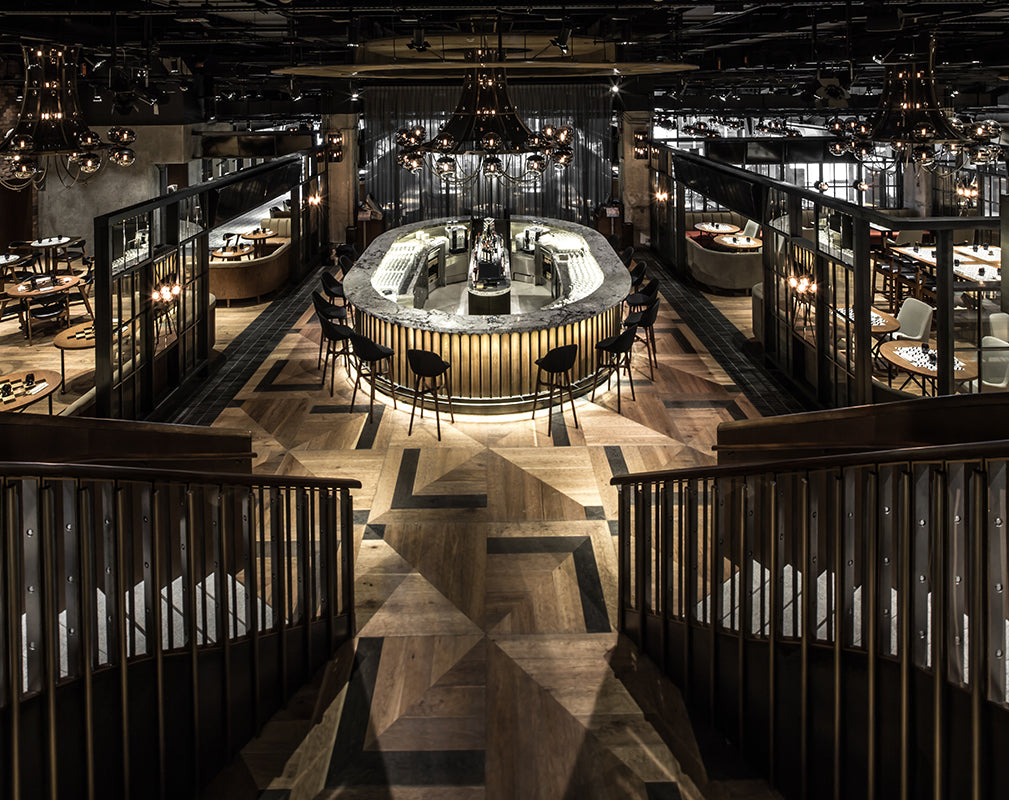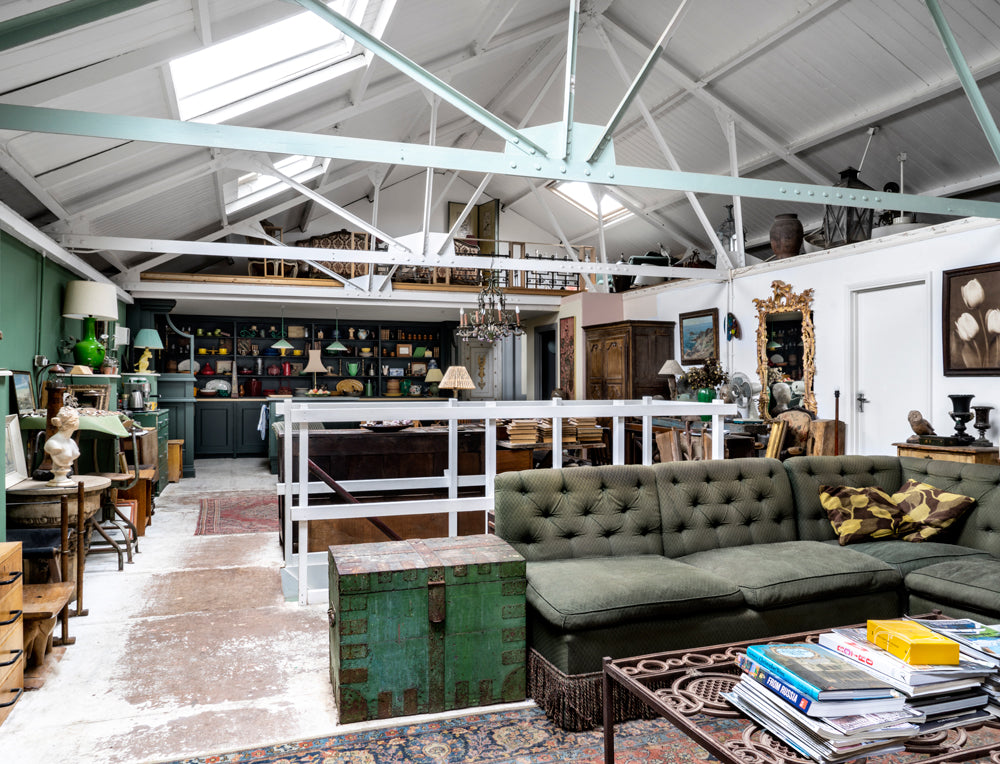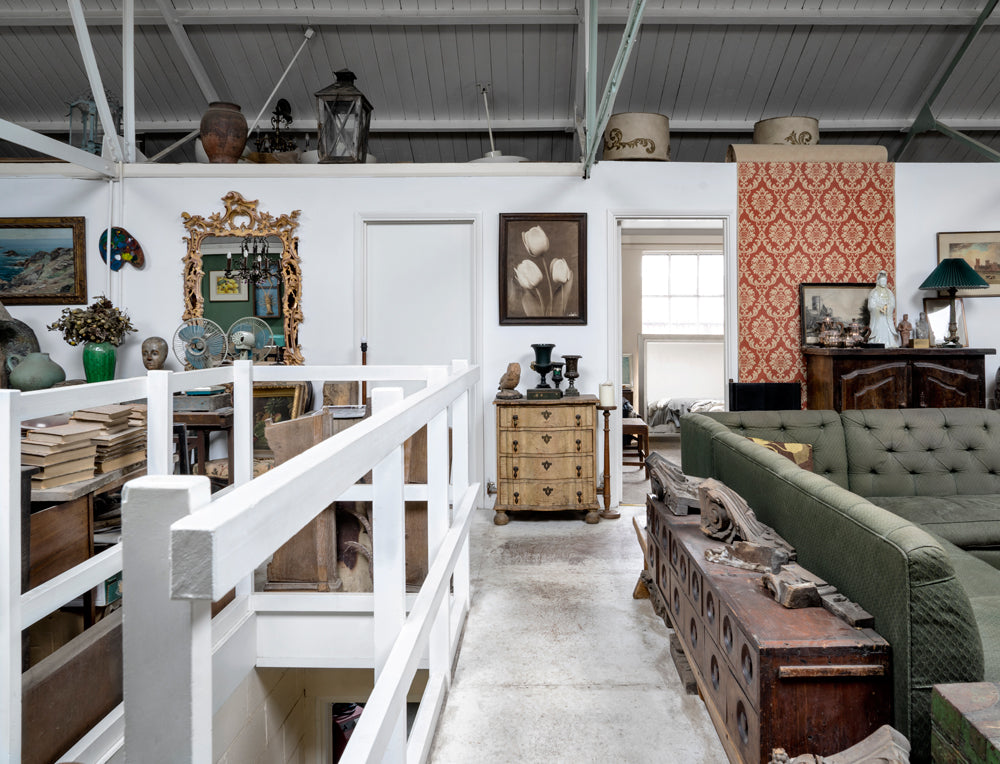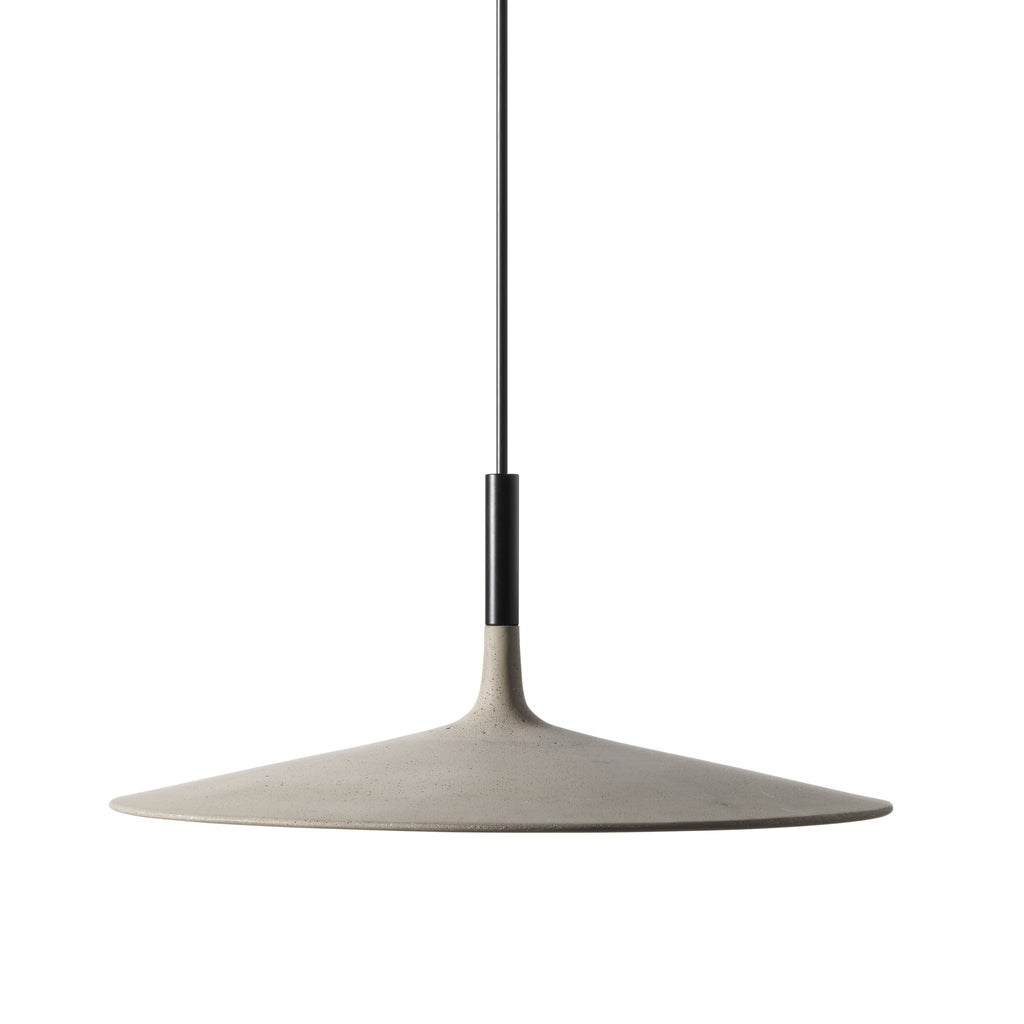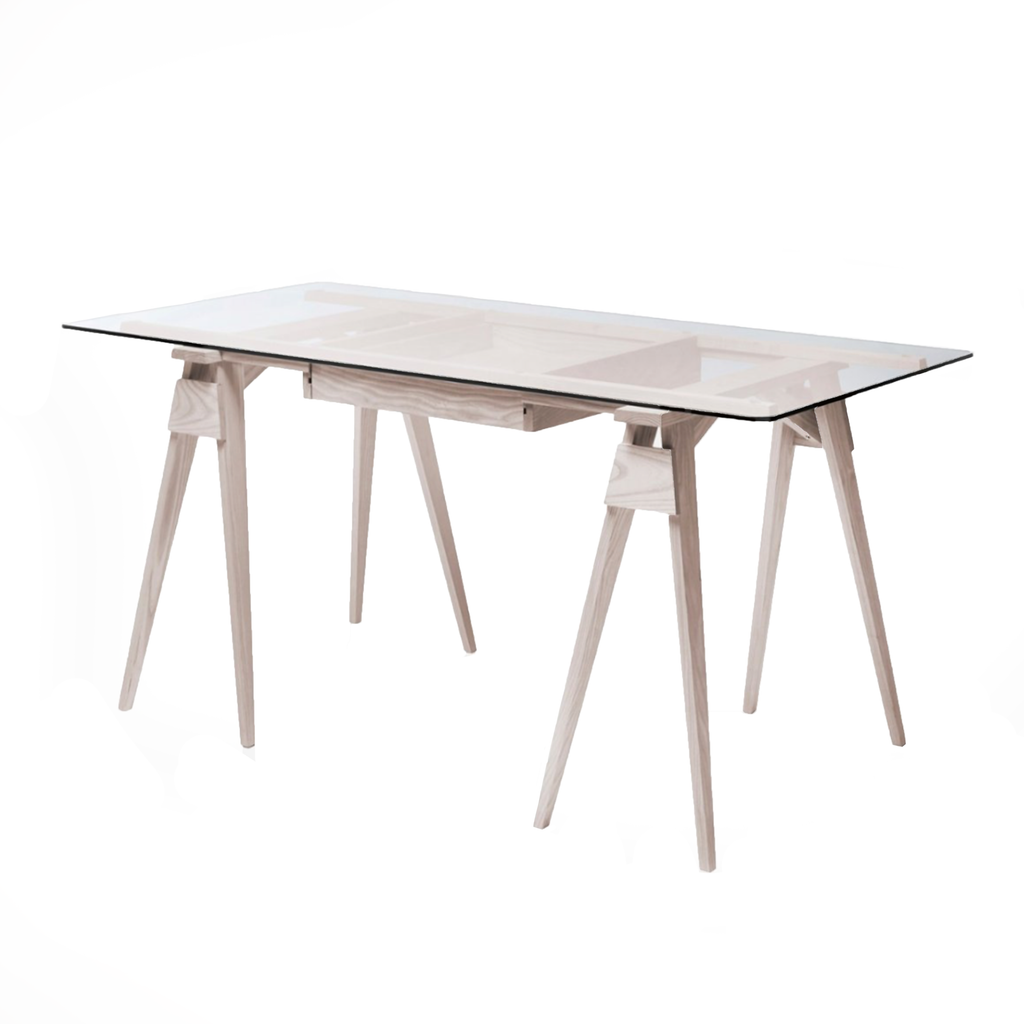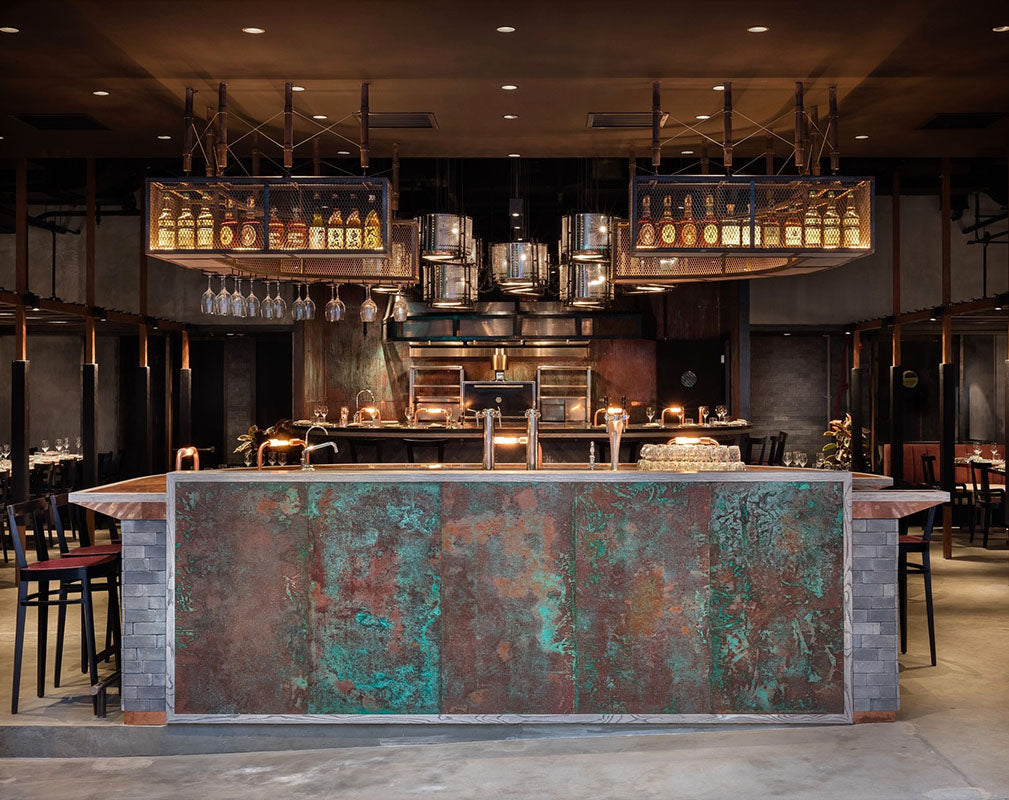
Hong Kong is a colourful melting pot, influenced by years of British rule and boasting a vibrant culinary scene. Interior designer Joyce Wang is renowned for her industrial aesthetic, original use of materials and sensitive depiction of cultural nuances in design. Her latest project, Rhoda, is a restaurant with a difference.

Rhoda (above and left) is at once true to Hong Kong’s past and present and a subtle reflection of its British chef’s passions and practices. Wang worked closely with head chef Nathan Green to conceive an interior scheme that reflected his individual style of cooking. Stepping from the bustling street and through the oversized raw-steel garage doors, guests are greeted by expanses of smoked metal, charred wood and reclaimed material. Burnt walls reflect the chef's culinary techniques. Washing-machine drums hanging above the bar were smoked as a reference to his charcoal grilling. It’s an impressive industrial setting that cleverly evokes the menu as well as the urban environs.
But Rhoda is far from being Wang’s first major project in Hong Kong; in fact it follows several other very successful restaurant schemes across the city.
Opened in 2012, AMMO (below) is a vibrant Mediterranean restaurant in the Asia Society headquarters, housed on the site of a former explosives compound built by the British army in the mid-19th century. The interior decor of the restaurant pays tribute to that cultural and historical significance. Raw materials reference the military and industrial context, with chandelier shades crafted out of bent copper mesh. But luxurious materials such as leather and velvet were selected to offset harder edges and textures. Outside, it is surrounded by tropical gardens. Inside, Wang chose patinated copper, with shades of pink, orange, green and brown as a visual link to the verdant exterior. Six metre high ceilings enhance the dramatic nature of the space and its decor.
Then came Haymarket (bottom), in 2013, robust and cinematic. This unique space serves as a restaurant, dining and gaming hall for members of one of Hong Kong’s most prestigious Jockey Clubs. Here, the design challenge was to enable diners to be sociable yet private, with buffet food easily accessible at all times.
And in 2014, Mott 32 opened beneath the Standard Chartered Bank landmark. Named after 32 Mott Street, the site of New York City's first Chinese convenience store, its interiors portray a fantastical rendering of an immigrant’s travels.
Today, with the latest opening of Rhoda and the continued vision of Joyce Wang, Hong Kong locals and visitors take memorable culinary journeys.
Rhoda photography by Lit Ma; AMMO and Haymarket photography by Edmon Leong. All images courtesy of Joyce Wang Interior Design Studio.

